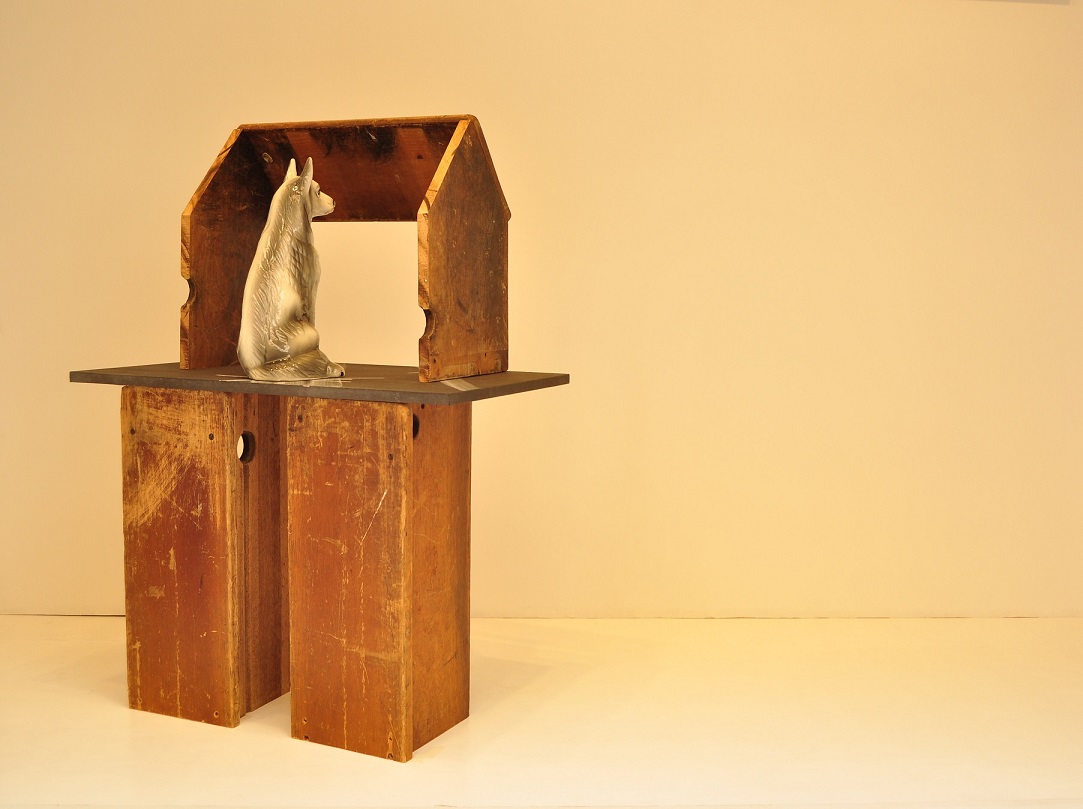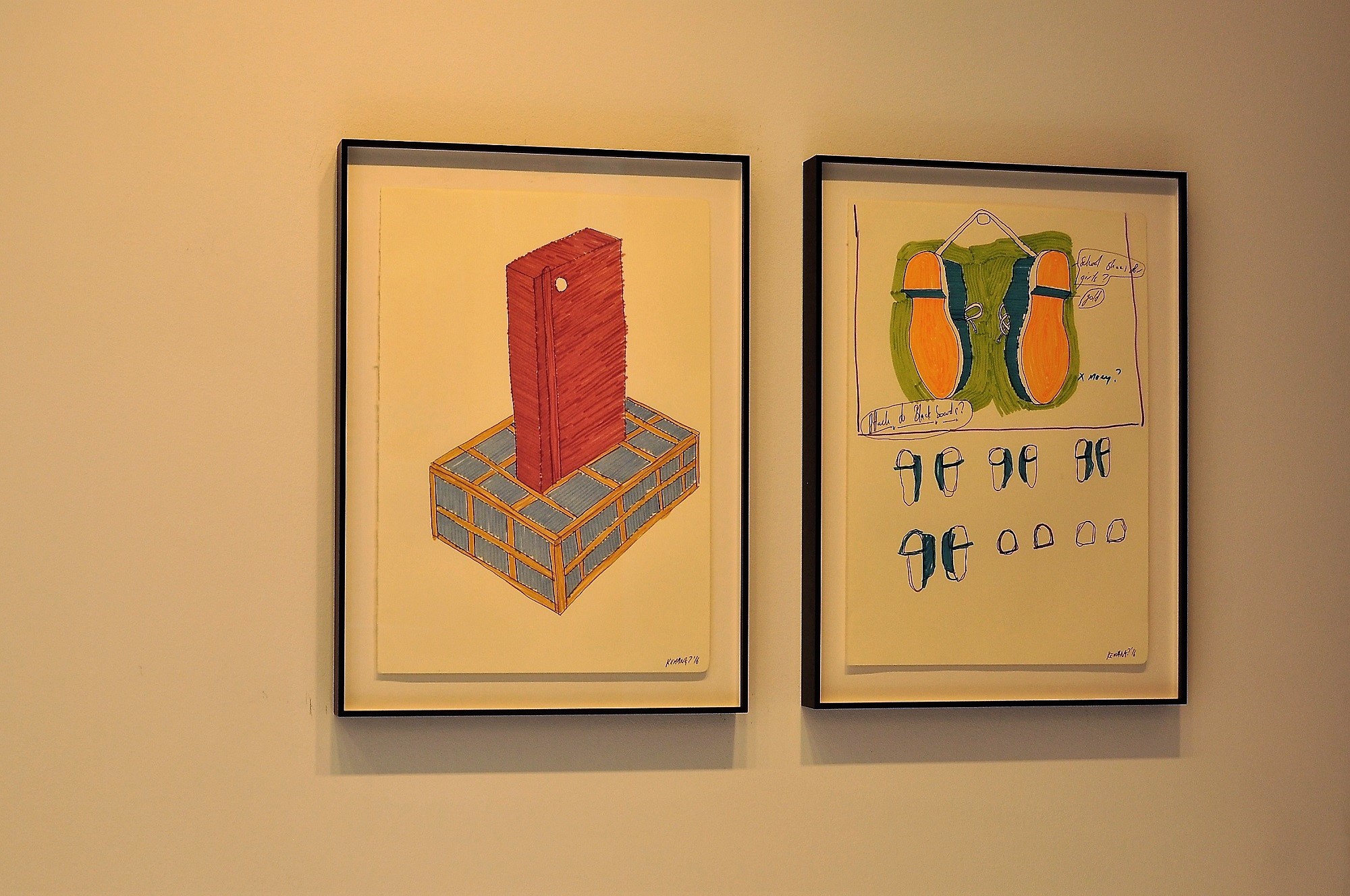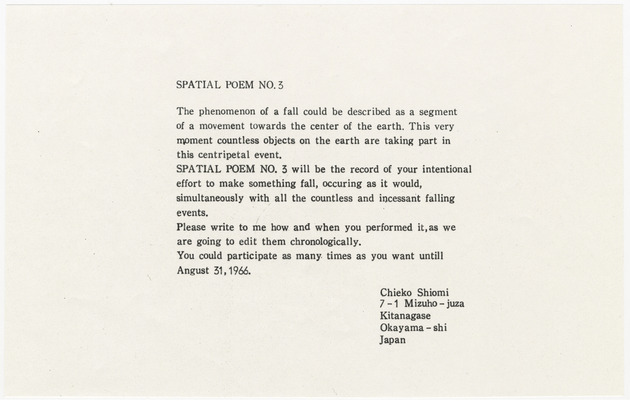Kemang Wa Lehulere
Every distance is not too far
04 de Noviembre 2017 - 13 de Enero 2018
Kemang Wa Lehulere was born in 1984 in Cape Town, and lives there. He has a BA Fine Arts degree from the University of the Witwatersrand (2011).
Winner of the fourth edition of the Malcolm McLaren award at the performance biennial, Performa 2017, in New York. Deutsche Bank Artist of the Year’ 2017. Currently on solo show at Maxxi, Roma. Other solo exhibitions have taken place at the Deutsche Bank KunstHalle (2017); the Art Institute of Chicago (2016); Gasworks, London (2015); Lombard Freid Projects, New York (2013); the Goethe-Institut, Johannesburg (2011), and the Association of Visual Arts in Cape Town (2009), in addition to Stevenson Gallery, Capetown/ Johannesburg 2016,2015 y 2012. Notable group exhibitions include Art/ Afrique, le nouvel atelier at Fondation Louis Vuitton (2017); African Odysseys at Le Brass Cultural Centre of Forest, Belgium (2015); the 8th Berlin Biennale (2014); Public Intimacy: Art and Other Ordinary Acts in South Africa at the Yerba Buena Center for the Arts, San Francisco (2014); The Ungovernables, the second triennial exhibition of the New Museum in New York (2012); A Terrible Beauty is Born, the 11th Lyon Biennale at the Museum of Contemporary Art, Lyon, France (2011) and When Your Lips Are My Ears, Our Bodies Become Radios at the Kunsthalle Bern and Zentrum Paul Klee in Bern, Switzerland (2010). Wa Lehulere was the winner of the inaugural Spier Contemporary Award in 2007, the MTN New Contemporaries Award in 2010, and the Tollman Award for the Visual Arts in 2012; he was one of two young artists awarded the 15th Baloise Art Prize at Art Basel in 2013, won the first International Tiberius Art Award Dresden in 2014 and was the Standard Bank Young Artist for Visual Arts in 2015.
Wa Lehulere was a co-founder of the Gugulective (2006), an artist-led collective based in Cape Town, and a founding member of the Center for Historical Reenactments in Johannesburg.
Every distance is not too far by Kemang Wa Lehulere, the current show at Marta Moriarty, has multiple layers traveling between the personal and the collective experience, and talking about History not as a past time but as a reality under construction, a narrative that expands through Kemang Wa Lahulere’s work. An exhibition that, although rooted in South Africa, is not confined to the South African context because it speaks of postcolonial realities shared with other countries whose societies still drag roles of colonial power and oppression. Wa Lehulere himself describes his work as a "protest against forgetting" and tells that history “comes and goes. It is not something fixed; it is malleable… It is the elasticity of history that excites me.”
This exhibition displays two pieces in dialogue, the sculpture Every distance is not too far, which gives title to the show, and the diptych Monument to lost time. The first one belongs to a series of pieces that answer to the art work Spatial Poem No 3 (Falling Event) by the Japanese artist Chieko Shiomi (b. 1938), an artist linked to the Fluxus movement, whose spatial poems contain instructions to perform actions. In response to this poem, Wa Lehulere suggests different ways of falling metaphorically, connecting facts, spaces and times in a non-linear way. The artist works with old deconstructed school desks, which on the one hand speak of the student uprising of 1976 in South Africa, one of the historical milestones in the struggle against Apartheid, and in which his aunt Sophia Lehulere - with whom the artist has worked very closely in different projects - received a bullet in her head. On the other hand, they criticize the educational system of South Africa today, still conquered by racism. Thus, these pieces connect with current struggles such as student protests against the ban on wearing natural afro hair in schools or the Fees must fall university movement.
This piece also includes a dog, another element that, in the same way as the old school desks, is repeated trough the last years of Wa Lehulere career. For those who know the South African collective imaginary, the first thing that comes to their minds, are the dogs used by the police during Apartheid to repress the population. Nevertheless, Wa Lehulere refuses the idea of let those be read in one way only, inasmuch as these animals have a spiritual power, which allow him to look at his past and at History in general, because through their eyes he connects with a time that does not belong to the present. This idea is born of a South African belief that if you fall asleep with the eyes of a dog staring at your own eyes, then you can see the Spiritual Kingdom through the animal’s eyes.
Monument to lost time is a later work, in which he continues to use his own and poetic narrative, transferring to the objects represented in his work the ability to unravel their lost meanings. ‘A celebration and a critique, a love song and a lamentation – a sad love song’, a phrase of the artist that sums up the feelings that the current exhibition evokes.



